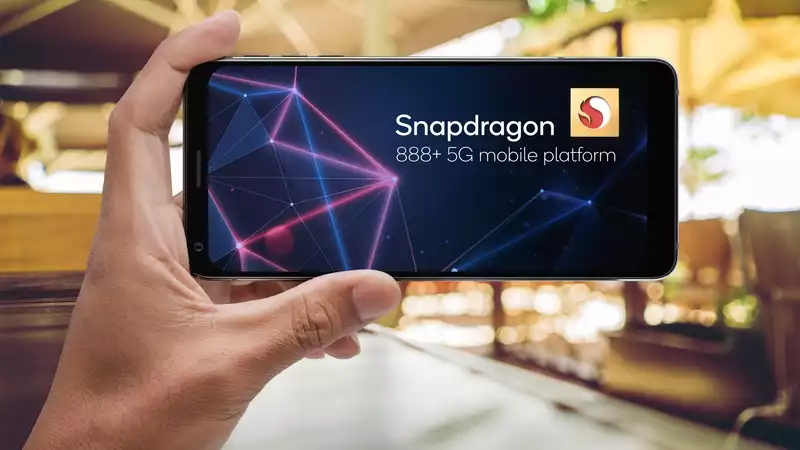The chip that will drive high-end Android phones later this year will debut at Mobile World Congress in Barcelona this week. Qualcomm promises a much smarter system-on-chip than its previous model.
The Snapdragon 888 Plus, unveiled today (June 28) at Qualcomm's keynote, improves the hardware and optimizes the software of the Hexagon 780 processor that drives Qualcomm's 6th generation AI engine. As a result, the chip is capable of 32 trillion operations per second (TOPS), a 20% improvement over the TOPS performance of the Snapdragon 888 chipset released last December.
The Snapdragon 888 Plus system-on-chip Kryo CPU has also been enhanced, with Qualcomm increasing the speed of the prime core to 3 GHz (2.84 GHz on the Snapdragon 888). This should improve app response times, browser performance, etc.
Other features of the Snapdragon 888 Plus are comparable to what Qualcomm offered in the Snapdragon 888, including 5G connectivity, Snapdragon Elite Gaming features aimed at bringing console gaming to mobile, and up to three The Snapdragon Elite Gaming features include 5G connectivity, Snapdragon Elite Gaming features aimed at bringing console gaming to mobile, and Spectra 580 Triple ISP, which allows users to shoot from up to three lenses simultaneously. Like the Snapdragon 888 before it, the 888 Plus will be the silicon of choice for the best Android phone to be released during the remainder of 2021.
Specifically, Qualcomm expects phones powered by the Snapdragon 888 Plus to begin appearing during the third quarter of this year. This timing dovetails nicely with Samsung's latest foldable phone, which is rumored to be announced in August. Both the Samsung Galaxy Z Fold 3 and Galaxy Z Flip 3 are expected to launch in August, and past versions of these phones have also featured the highest version of Qualcomm silicon available at launch.
The same can be said for OnePlus' flagship for the second half of this year, rumored to be called the OnePlus 9T. Last year's OnePlus 8T stuck with the same Snapdragon 865 system-on-chip that is found in other OnePlus 8 phones, while the OnePlus 7T, released the previous year, used the Snapdragon 855 chipset from the OnePlus 7 phone upgraded to the Snapdragon 855 Plus from the Snapdragon 855.
Typically, the T model of OnePlus' flagship phone comes six months after the phone maker's last flagship phone was introduced; the OnePlus 9 and OnePlus 9 Pro both debuted in March.
Of course, neither Samsung nor OnePlus are among the handset makers that announced support for the Snapdragon 888 Plus in Qualcomm's announcement today. The chipmaker did not announce which unreleased phones will use its upcoming silicon, but it did include testimonials about the Snapdragon 888 Plus from Motorola, Asus' ROG division, Vivo, Xiaomi, and Honor.
The Snapdragon 888 Plus was only part of the news at Qualcomm's keynote, as the chipmaker also used the Mobile World Congress spotlight to tout the growth of millimeter wave 5G. Millimeter wave 5G is a faster version of 5G, delivering much faster performance than LTE. So far, millimeter wave has been implemented primarily in the U.S. and accounts for the bulk of Verizon's 5G.
According to Qualcomm, more than 40 carriers and device manufacturers worldwide are working to support mmWave 5G. (There are currently more than 120 devices supporting mmWave 5G, nearly all of which are powered by Snapdragon.
And communication speeds should improve further. According to Qualcomm, the Snapdragon X65 modem, which will be available later this year, will exceed 10 Gbps in wireless tests. Qualcomm likely achieved these numbers under ideal conditions, but suggests that faster speeds will be possible as 5G rolls out.










Comments